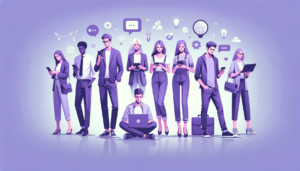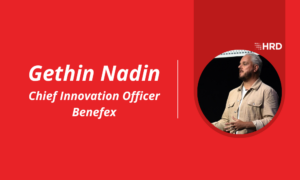Benefits to promote work-life balance and meet your personal goals
- 4 Min Read
Modern benefits offered to employees ought to relate to their lifestyle and culture, as well as being useful to those who benefit. In a world driven by artificial intelligence, an ever-growing emphasis on wellness and an unwavering passion to learn new skills, it makes entire sense for HR departments to offer rewards that mirror the needs of our modern-day workforce.
- Author: Emily Sexton-Brown
- Date published: Oct 2, 2018
- Categories

It’s time to redesign benefits and reward offerings to match with employees individual needs, ensuring overall happiness, loyalty and talent retention.

Some companies have started to go above and beyond for their employees. For instance, Air BnB offer each employee £1,413 to travel, Skyscanner offer discounts to local pubs and beauty salons and Google offers their employees free food in their office locations, with a variety of choices.
Wellbeing
We are in the depths of developing a far more inclusive way of working, which involves restructuring the way we think about working days, as well as the role of the employer in employees’ wellbeing and tailoring approaches to meet the specific needs of each employee.
A lot of much-needed attention should focus on the wellbeing and personal growth of employees, driven by findings that happier workforces increase overall company productivity. Thomsons Online Benefits also found that 84% of employees feel that benefits impact their loyalty towards their employer and their positivity at work. Therefore, its imperative benefits and rewards are relevant for your workforce. A recent example of innovative companies creating dedicated wellbeing programmes for their employees include
Normura International PLC won the category for healthiest large company workplace, which was perhaps unexpected as banks aren’t normally associated with caring atmospheres. Through Normura International PLC’s wellbeing initiatives including a Cycle to Work scheme that 150 employees use, and an internal medical and fitness centre, Normura was able to save
Learning and development
Empowering employees with knowledge is one of the most progressive and constructive ways of developing employees.
Why aren’t more employers considering learning and development as a beneficial reward that they can actively offer their employees? Employers must meet the needs of their employees. In a recent report by Manpower, ‘Millennial careers: 2020 vision’, it was reported that millennials are more likely to stay at a company that is willing to progress them professionally and personally. With the millennial workforce set to account for over one third of the overall global workforce by 2020, this is a huge opportunity for employers and leaders to be ahead of the curve and provide innovative training for their workforce.
The same concept applies to the aging workforce also; within 20 years one quarter of the UK population will be age 65 years, or older.Therefore, employers need to account for training and helping the aging workforce adapt to the needs of the modern workplace.
Employers need to capitalise on skills more frequently found among the aging workforce due to more extensive life experience, including more in-depth knowledge of a particular area, or more considered decision-making, These skills should be valued and taught to a younger workforce.
Andy Briggs, CEO of Aviva UK Life, has been appointed by the Government as its ‘Business Champion for Older Workers’ and is imploring every UK employer to widen their 50-69-year-old workforce by 12% by 2022. “Many people aged over 50 want to continue to develop their careers, learn new skills, try new things and share their broad knowledge and experience” Briggs says, “This is good for everyone, and particularly for employers and their businesses who will benefit from drawing on the talent, creativity and experience of all of their employees, regardless of their age.”
If the employment rate of people aged 50-64 years matched that of those aged 35-49 years, it would add more than 5% to UK GDP (£88 billion). This is clearly an opportunity to be seized by business leaders.
Integrating sophisticated AI systems will also increase engagement within leaning and development, allowing employees to learn in a more personalised way. Josh Bersin, Corporate Talent, HR, Learning Analyst and Founder of Bersin by Deloitte, believes that L&D and HR should be enabling employees to learn by using the latest tools and techniques to drive performance, as well as expanding overall productivity.
Flexible benefits
To provide employees with a well-rounded benefits programme that helps with talent retention and attraction you need to have personalised benefits that support employees across the board. Whether it’s a flexible wellness pot to spend on gym membership or exercise classes, or helping with financial wellness by educating your employees around managing debt and giving them tangible solutions, it’s vital to keep the varied needs of your employees in mind.
For more on how to meet the needs of your multi-generational and diverse workforce, read further information here.









